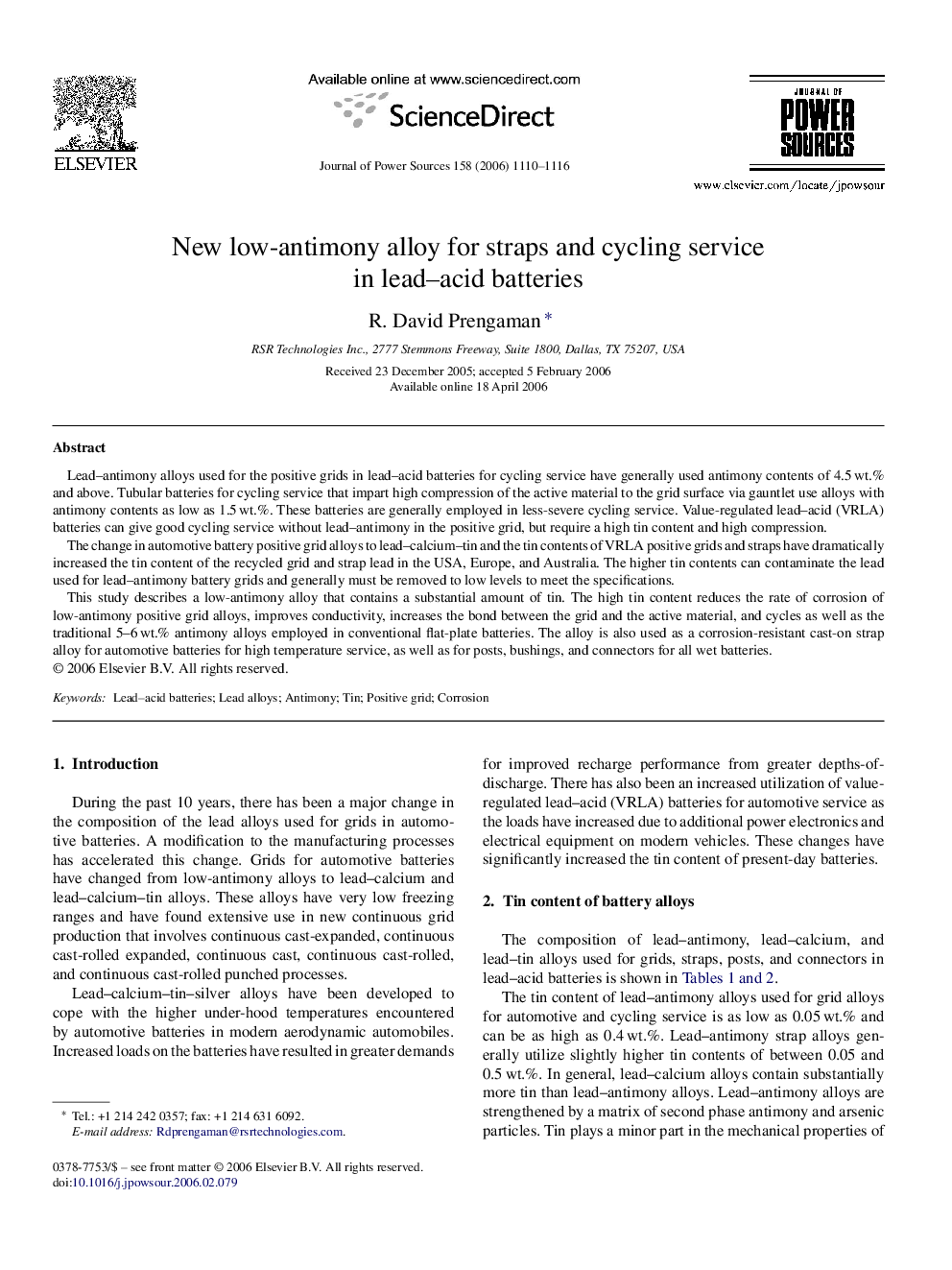| Article ID | Journal | Published Year | Pages | File Type |
|---|---|---|---|---|
| 1287380 | Journal of Power Sources | 2006 | 7 Pages |
Lead–antimony alloys used for the positive grids in lead–acid batteries for cycling service have generally used antimony contents of 4.5 wt.% and above. Tubular batteries for cycling service that impart high compression of the active material to the grid surface via gauntlet use alloys with antimony contents as low as 1.5 wt.%. These batteries are generally employed in less-severe cycling service. Value-regulated lead–acid (VRLA) batteries can give good cycling service without lead–antimony in the positive grid, but require a high tin content and high compression.The change in automotive battery positive grid alloys to lead–calcium–tin and the tin contents of VRLA positive grids and straps have dramatically increased the tin content of the recycled grid and strap lead in the USA, Europe, and Australia. The higher tin contents can contaminate the lead used for lead–antimony battery grids and generally must be removed to low levels to meet the specifications.This study describes a low-antimony alloy that contains a substantial amount of tin. The high tin content reduces the rate of corrosion of low-antimony positive grid alloys, improves conductivity, increases the bond between the grid and the active material, and cycles as well as the traditional 5–6 wt.% antimony alloys employed in conventional flat-plate batteries. The alloy is also used as a corrosion-resistant cast-on strap alloy for automotive batteries for high temperature service, as well as for posts, bushings, and connectors for all wet batteries.
